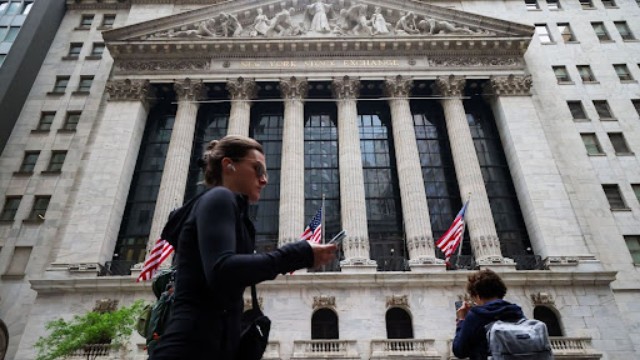
Office vacancy rates across the country have stayed high at 18.5%, a significant rise from the 10% seen before the pandemic. (Photo by Artur Widak/NurPhoto via Getty Images)
The Canadian office real estate market saw a glimmer of hope recently, with top-tier buildings experiencing a second consecutive quarter of reduced vacancies. This positive trend, however, contrasts with stagnant overall vacancy rates that remain significantly higher than pre-pandemic levels.
According to CBRE’s Q2 2024 Canada Office Figures released this week, there was a net absorption of 2.2 million square feet in the second quarter. This metric measures the newly leased office space versus the space that became vacant.
Marc Meehan, CBRE's managing director of research, highlighted encouraging signs across major city downtowns, particularly in Class A buildings. These are characterized by high-quality construction, modern amenities, and management.
Nationwide, the vacancy rate for Class A buildings dropped by 30 basis points, with improvements noted in six out of ten cities. The vacancy rate for trophy assets, the highest tier within Class A, also saw a nearly one percent decrease. This was driven by the opening of two fully leased National Bank towers in Montreal.
Despite these gains, the overall vacancy rate has remained stubbornly high at around 18.5 percent across the country for more than a year. This is largely due to less favourable conditions in lower-tier Class B and C buildings.
Meehan pointed out that these lower-tier buildings are facing increasing vacancy rates and decreasing demand, a trend likely to continue for years.
The gap between vacancy rates in downtown Class A buildings and Class B/C buildings has widened to 8.5 percent. This divide is expected to persist as tenants prefer higher-quality spaces, leaving outdated properties with little tenant interest.
Calgary and London, Ontario, reported the highest vacancy rates in Q2, while Vancouver and Ottawa had the lowest. New office construction projects in Q2 were minimal, totalling less than 100,000 square feet. This scarcity is influenced by oversupply, high interest rates, and cautious investor behaviour.
Construction of new office space has dwindled to its lowest since 2005, totalling 5.7 million square feet. Meehan anticipates this number will continue to decline over the next few years, with most of the new inventory expected by late 2024 or early 2025.
Despite these challenges, there are opportunities for owners of lower-tier buildings who invest in renovations to stay competitive. As demand for prime office space increases, there may be overflow into the next tier of buildings that are well-located and offer desired amenities.















